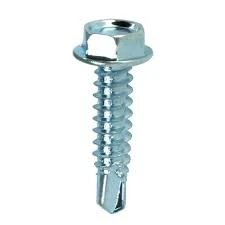Choosing the Right Concrete Wedge Anchor Bolts for Your Construction Project
Understanding Concrete Wedge Anchor Bolts A Comprehensive Guide
Concrete wedge anchor bolts are essential components in various construction and engineering applications. They provide secure anchoring solutions for structures, allowing for the safe mounting of heavy equipment, fixtures, and machinery. In this article, we will delve into the characteristics, installation process, and advantages of using concrete wedge anchor bolts.
What Are Concrete Wedge Anchor Bolts?
Concrete wedge anchor bolts are fasteners specifically designed for use in concrete. They consist of a threaded rod, a wedge-shaped expansion mechanism, and a nut and washer. When the bolt is installed, the wedge expands against the sides of the drilled hole in the concrete, creating a secure and stable grip. This design allows the anchor to withstand substantial loads and forces, making it ideal for various applications, from structural reinforcements to industrial machinery mounting.
Key Characteristics
1. Material Most concrete wedge anchor bolts are made from carbon steel, stainless steel, or galvanized steel, offering varying levels of corrosion resistance. The choice of material depends on the environment where the bolts will be used.
2. Load Capacity The holding power of concrete wedge anchors varies based on factors such as the diameter of the bolt, the depth of the embedment, and the quality of the concrete. Typically, larger diameters and deeper embedment increase the load capacity.
3. Size Wedge anchor bolts are available in a variety of sizes, ranging from smaller diameter bolts (e.g., 3/8 inch) to larger ones (up to several inches in diameter). The diameter and length should be selected based on the specific application requirements.
Installation Process
The installation of concrete wedge anchor bolts involves several straightforward steps
1. Drilling Begin by drilling a hole into the concrete using a hammer drill and a masonry bit. The diameter and depth of the hole should match the specifications of the anchor being used.
concrete wedge anchor bolts

2. Cleaning It is crucial to clean the hole to remove any dust or debris, as this can affect the anchor’s holding power. A wire brush or compressed air can be used for cleaning.
3. Installing the Bolt Insert the wedge anchor into the hole, ensuring that the expansion clip is at the bottom and aligned correctly.
4. Tightening Using a wrench, tighten the nut on the bolt. As you tighten, the wedge will expand and create a secure grip within the concrete.
5. Verification Finally, check that the anchor is secure and capable of bearing the intended load.
Advantages of Using Concrete Wedge Anchor Bolts
1. Strong Holding Power Due to their design, wedge anchor bolts can hold substantial weights, making them suitable for heavy-duty applications.
2. Versatility These anchors can be used in various concrete applications, including attaching railings, shelving units, or even in commercial construction projects.
3. Ease of Installation The installation process is relatively simple, especially for professionals familiar with anchor bolts. This can lead to decreased labor costs and faster project timelines.
4. Corrosion Resistance With options like galvanized or stainless steel, wedge anchors can endure different environmental conditions, increasing their longevity and reliability.
Conclusion
Concrete wedge anchor bolts are indispensable in modern construction, offering a robust and reliable anchoring solution for a wide array of applications. Their strength, versatility, and ease of installation make them a preferred choice among contractors and engineers. When used correctly, these anchors can significantly enhance the safety and structural integrity of any concrete project. Understanding the fundamentals of concrete wedge anchors will ensure their effective use, leading to successful and long-lasting installations.
-
Wedge Anchor Bolts: Secure Fastening SolutionshírekAug.05,2025
-
Insulation Fixings: Secure and Durable SolutionshírekAug.05,2025
-
Full Threaded Studs: Versatile Fastening SolutionshírekAug.05,2025
-
Expanding Fasteners: Secure and Reliable SolutionshírekAug.05,2025
-
Butterfly Toggle Anchors: Secure and Easy to UsehírekAug.05,2025
-
Bracing Solutions for Steel StructureshírekAug.05,2025
